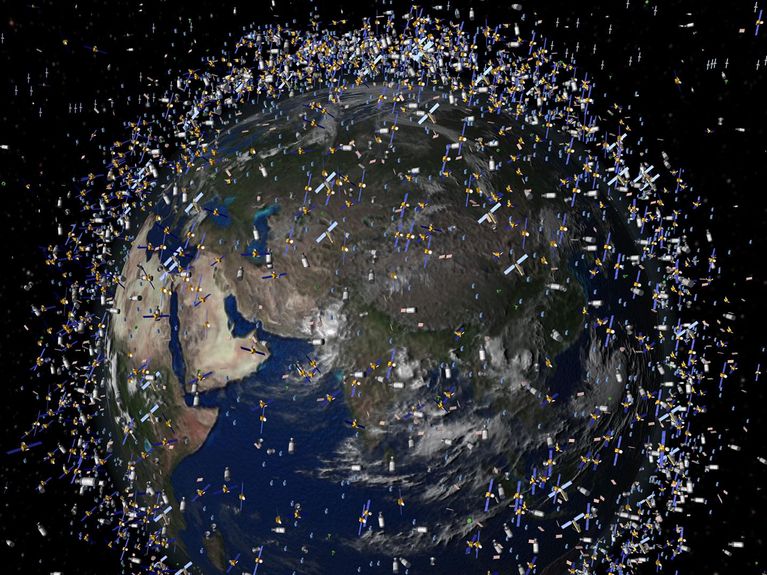
Challenge #58
Protecting space technology from debris and solar wind.
Space debris drifting uncontrollably through space poses a threat to satellites and rockets. We aim to protect this expensive infrastructure.
Participating centers
Each year, as many as 115 rockets make the journey into space. Due to the increasing commercialization of space travel, this number is set to increase considerably in the future. These rockets often carry components, technical equipment, or satellites that eventually become superfluous but nevertheless remain in space. These remnants, also known as space debris, drift uncontrollably through space at extremely high speeds.
Currently, there is already more than 9500 metric tons of debris orbiting the Earth. It already poses an immense danger to the technology in space, but the risk of collisions also jeopardizes every mission to bring more equipment into orbit. DLR therefore catalogs the debris and monitors its routes. We are also developing robots capable of capturing this waste and thereby minimizing the risk of impacts for space travel.
But it is not just the junk. Another danger to our satellites is space weather. Solar winds can fry their communication and navigation systems, putting them out of commission – and that is a safety risk for us on Earth, too. DLR’s Ionosphere Monitoring and Prediction Center (IMPC) therefore provides space weather forecasts and warnings, helping to keep our communication channels well protected.
(Header: ESA)